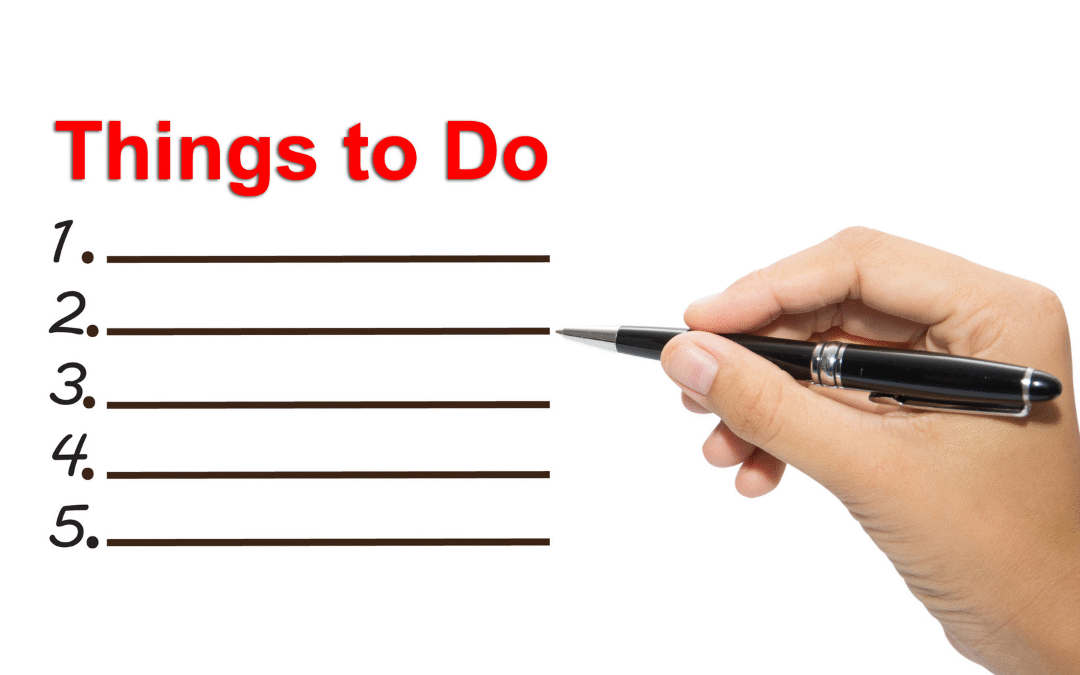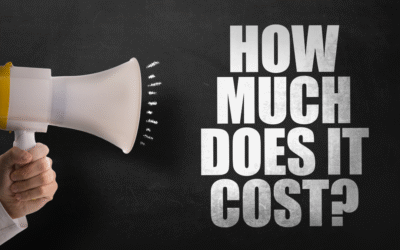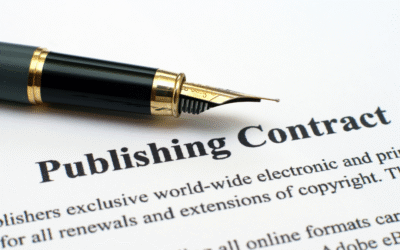This guide is designed to help you navigate the intricate world of self-publishing, ensuring that your journey as a new author is smooth and successful. I’ll share imperative tips that can save you time and effort while avoiding common pitfalls, such as poor formatting and ineffective marketing. By understanding the publishing process and strategies for promotion, you can transform your manuscript into a published book that reaches your target audience. Let’s explore the step-by-step process of publishing your first book!
Key Takeaways:
- Understanding the Publishing Process: Familiarize yourself with the different publishing options available, including traditional publishing, self-publishing, and hybrid models, to choose the best path for your book.
- Marketing and Promotion Strategies: Develop a comprehensive marketing plan that includes building an author platform, utilizing social media, and engaging with readers to effectively promote your book.
- Edit and Prepare Your Manuscript: Invest time in thorough editing, seek feedback from beta readers, and ensure your manuscript is polished before submitting it to agents or publishers or preparing for self-publishing.
Understanding the Publishing Process
The publishing process can seem daunting, but understanding its various stages can significantly ease your journey as a new author. It typically involves writing, editing, designing, and finally distributing your book. I encourage you to take your time in each stage, as thorough preparation will enhance your chances of success and pave the way for a fulfilling publishing experience.
Traditional Publishing vs. Self-Publishing
On one hand, traditional publishing offers the advantage of professional support, such as editing and marketing, through established publishing houses. However, it often requires lengthy query processes and relinquishing significant control over your work. On the other hand, self-publishing gives you the freedom to retain ownership and decision-making power, though it places the responsibility for all aspects of the publishing process squarely on your shoulders.
Steps to Take Before Publishing
The steps you take before publishing can make all the difference in your book’s success. Start by meticulously editing your manuscript, either through self-editing or by hiring a professional editor to ensure your work is polished. Next, craft an engaging book cover and consider your target audience to design a marketing plan that resonates with readers. Additionally, explore various distribution channels, whether you opt for print or digital formats, so you can reach your audience effectively.
Plus, remember that researching your market is crucial. Knowing your target audience can inform your writing style and promotional strategies. Always prioritize professional editing to ensure your book reads smoothly and engages readers. Creating a robust marketing plan will help you build a reader base that supports your launch. If you overlook these critical steps, you may face challenges that could jeopardize the reception of your book. Aim for thoroughness and clarity in every aspect of preparing for publication to maximize your success.
Crafting Your Manuscript
Clearly, crafting your manuscript is a foundational step in the publishing process. It’s necessary to channel your creativity and develop a well-structured narrative that resonates with readers. Focus on developing characters, setting, and plot in a cohesive manner, ensuring a compelling journey from start to finish. Spending time to refine your ideas will set you apart as a new author committed to producing quality work.
Writing Tips for New Authors
Even seasoned writers faced challenges starting out. To help you navigate the process, consider these tips:
- Establish a strong writing routine.
- Seek feedback from trusted individuals.
- Read widely across various genres.
- Embrace rewriting as a necessary part of creation.
Knowing these strategies will empower you to write with confidence and purpose.
The Importance of Editing and Proofreading
Little did I know when I began writing that the editing process would be as crucial as the creation of the manuscript itself. It involves revising content for clarity, structure, and flow, which ultimately enhances the reader’s experience. I realized that thorough proofreading ensures a polished final product free from errors, making it professional and credible.
Writing is an iterative journey that goes beyond just getting words on a page. The importance of editing and proofreading cannot be overstated, as they are vital for transforming your initial draft into a refined manuscript. During this phase, I focus on eliminating grammatical errors, inconsistencies, and awkward phrasing. I incorporate feedback from beta readers and professional editors, ensuring my work is cohesive, engaging, and ready for publication. Keep in mind, a well-edited manuscript not only reflects your commitment to quality but also builds your reputation as an author in the competitive literary market.
Designing Your Book
Not only does your book’s design play a critical role in attracting readers, but it also reflects your brand as an author. I understand that the aesthetics of your book must resonate with your target audience while maintaining a professional look. From the right typography to the perfect layout, investing time in getting the design right can set your book apart from the competition.
Choosing a Book Format
With various formats available, including print, ebook, and audiobooks, selecting the right one is crucial for reaching your audience effectively. I suggest you consider where your readers prefer to consume content, as this decision can significantly impact your book’s success.
Cover Design Essentials
Little do many authors realize, the cover design can make or break a book’s success. I want to emphasize that your cover must not only align with your genre but also be visually appealing and engaging. A professional design can grab attention, showcase your story’s theme, and communicate quality.
This consideration of cover design is paramount as it serves as the first impression for potential readers. I recommend using professional designers who understand the nuances of color theory, typography, and layout. Note, an authoritative cover conveys credibility, enticing readers to pick up your book. Furthermore, it’s important to ensure that the title is legible even in thumbnail size, especially for online sales. Failing to capture your audience visually can seriously impact your book sales, so make this a priority in your publishing journey!
Navigating the Submission Process
Many new authors feel overwhelmed by the submission process, but understanding the necessary steps can make it more manageable. Start by researching potential publishers or literary agents, as they each have specific guidelines for submissions. Pay close attention to their preferences and requirements, as this could be the key to getting your manuscript into the right hands.
Query Letters and Proposals
Proposals are crucial in getting the attention of agents and editors. A strong query letter should succinctly introduce your book, highlight its unique aspects, and include a brief author bio. Make sure to carefully follow each recipient’s specific guidelines, as proper formatting and brevity can greatly influence your success.
Finding the Right Literary Agent
Right from the start, I recommend diligently researching literary agents who specialize in your genre. Look for someone who has a strong track record of selling books similar to yours. A good literary agent will not only represent your work but also offer guidance, support, and industry connections.
A key to finding the right literary agent is to focus on their experience and personal style. It’s crucial to check their client list and recent sales to gauge their success. Pay attention to their submission preferences and ensure that their approach aligns with your vision for your book. Networking at industry events and connecting with fellow authors can also provide valuable insights. Bear in mind, choosing the wrong agent could significantly impact your career, so take your time to make an informed decision that feels right for you.
Marketing Your Book
After you’ve written your manuscript, the next crucial step is to effectively market your book. This process involves understanding your audience, developing a strategic marketing plan, and utilizing various platforms to reach potential readers. By focusing on building relationships and creating a stronger presence in your niche, you’ll enhance your chances of a successful book launch and continued sales.
Building an Author Platform
One of the first steps to reach your readers is to establish an author platform. This can include creating a professional website, starting a blog, and engaging with readers through email newsletters. This platform serves as your online home where you can showcase your work and connect with loyal readers.
Promoting Through Social Media
Any author looking to increase their book’s visibility should leverage social media for promotion. This channel allows you to share updates, connect with your audience, and create buzz around your book’s release.
Marketing through social media is a powerful strategy that can significantly extend your reach. I believe it’s vital to engage authentically with potential readers by posting relatable content, conducting live Q&A sessions, and sharing snippets of your writing. You can use visuals, such as book covers, quotes, or behind-the-scenes videos, to create a stronger connection with your audience. However, be cautious of overposting or coming off as overly commercial; this can alienate followers rather than attract them. Focus on building a community rather than just promoting a product.
Understanding Publishing Costs
Despite the excitement of writing your first book, understanding the various publishing costs is crucial for your success. Before you probe the self-publishing journey, it’s important to clarify what expenses you might incur, such as editing, cover design, formatting, and marketing. By being proactive and informed, you can better prepare financially, ensuring that your book’s quality reflects the investment you’ve made.
Budgeting for Self-Publishing
Some authors underestimate the costs associated with self-publishing and end up feeling overwhelmed. To avoid this, it’s vital to create a detailed budget covering all potential expenses. This will not only help you allocate funds efficiently but also allow you to prioritize quality services, which can make a significant difference in your book’s success.
Royalties and Rights Management
You need to be aware of how royalties work and how to manage your rights effectively. Understanding these components can greatly influence your earnings and control over your work.
Understanding royalties and rights management is vital for any new author. Your royalties are the percentage of earnings you receive from the sale of your book, typically ranging from 25% to 70%, depending on the platform you choose to publish through. It’s crucial to read and comprehend the terms and conditions concerning your rights, as some platforms may restrict your ability to sell your book elsewhere. Additionally, managing your rights effectively allows you to retain control over adaptations, translations, and other versions of your work. Failure to understand these concepts can result in potential loss of income or creative freedom.
Final Words
Ultimately, publishing your first book is an exciting yet challenging journey that requires careful planning, dedication, and knowledge. By following the steps outlined in ‘How to Publish Your First Book – A New Author’s Essential Guide,’ you can navigate the process with confidence. I encourage you to take action, embrace feedback, and stay committed to your vision. Recall, every accomplished author started where you are now, and with perseverance, your dream of publishing can become a reality. Believe in yourself and the story only you can tell—you have everything to gain!
FAQ
Q: What steps should I follow to publish my first book?
A: To publish your first book, start by writing a complete draft and revising it thoroughly. After that, consider hiring a professional editor to refine your manuscript. Next, decide whether you want to self-publish or use a traditional publishing route. For self-publishing, research platforms like Amazon Kindle Direct Publishing (KDP) or IngramSpark. For traditional publishing, create a query letter and look for literary agents or publishers that fit your genre. Additionally, focus on cover design, formatting, and marketing strategies to successfully launch your book.
Q: How do I choose the right publishing method for my book?
A: The right publishing method depends on your goals, resources, and target audience. Self-publishing allows for more creative control and quicker release times, which is ideal for authors looking to reach readers immediately. However, it requires you to manage everything from editing to marketing. Traditional publishing may offer more prestige and access to established distribution channels but can be competitive and time-consuming. Assess your priorities and research both options to determine which aligns best with your vision as an author.
Q: What marketing strategies should I implement after publishing my book?
A: After publishing your book, it’s important to create a marketing plan to reach potential readers. Start by building an author website and engaging with audiences on social media platforms where your target readers are most active. Consider running promotions, such as giveaways or discounted prices during launch week, to generate buzz. Participate in book fairs, author events, or virtual book clubs to increase visibility. Additionally, gather reviews and testimonials to build credibility, and consider utilizing email newsletters to keep in touch with your audience and share updates on future projects.








